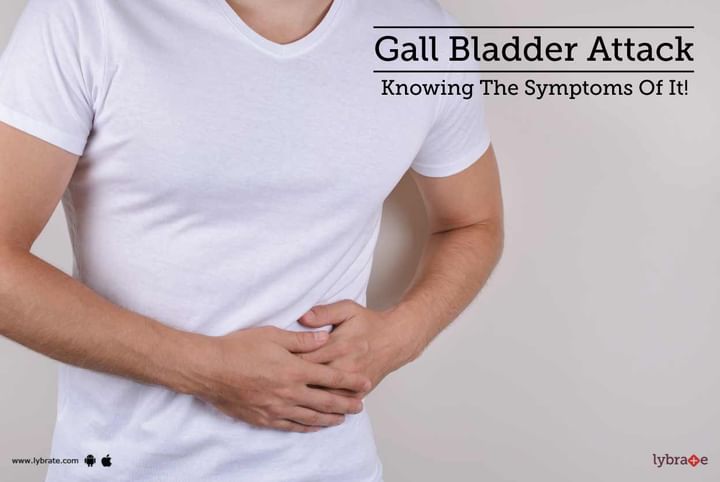Get the App
For Doctors
Login/Sign-up
Last Updated: Oct 23, 2019
BookMark
Report
Gall Bladder Attack - Knowing The Symptoms Of It!
The gall bladder, which sits just below the rib cage to the right of the stomach, is very tender to touch. It is a little sac or storage compartment for bile, which is produced by the liver. The gallbladder emits bile into the small intestines via a duct referred to as the cystic duct. The entire process is meant to break down foods (namely fatty foods).
Gallbladder attack symptoms may include one or more of the following:
- Pain in the back right shoulder blade: Sometimes, pain radiates through to the back shoulder blade on the right side or in the middle between the shoulder blades. This is pain from the gallbladder affecting the back of the shoulder. This back shoulder blade chest pain is one of the most common yet unknown symptoms of a gallbladder disorder. This can come and go or be constant. It may be sharp, excruciating or dull. It may also occur especially at night. A gallbladder attack will typically last for one to four hours.
- Pain in the stomach: The most common symptom of a gallbladder problem is pain. This pain usually occurs in the mid to upper-right section of your abdomen. It can be mild and intermittent, or it can be quite severe and frequent. In some cases, the pain will begin to radiate to other areas of the body, including the back and chest.
- Nausea or Vomiting: Nausea and vomiting are common symptoms among all types of gallbladder problems. But only a chronic gallbladder disease may cause digestive problems, such as acid reflux, gas, nausea, and vomiting.
- Diarrhea: Having more than four bowel movements a day for at least three months may be a sign of chronic gallbladder disease.
- Fever or Chills: An unexplained fever may signal that you have a bile duct infection. If you have an infection, you need treatment before it worsens and becomes dangerous. The infection can become life-threatening if it's allowed to spread to other parts of the body.
- Unusual Stools or Urine: Lighter-colored stools and dark urine are possible signs of a common bile duct block.
In case you have a concern or query you can always consult a specialist & get answers to your questions!



+1.svg)
